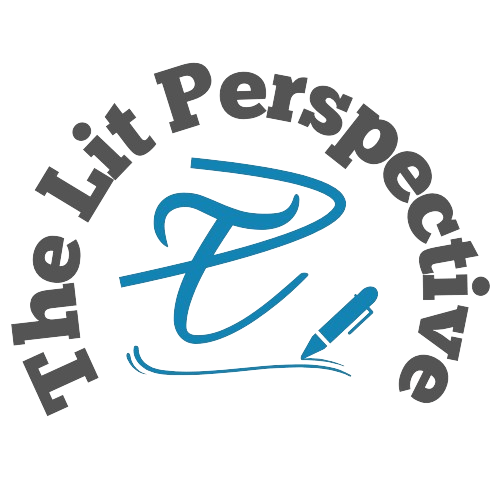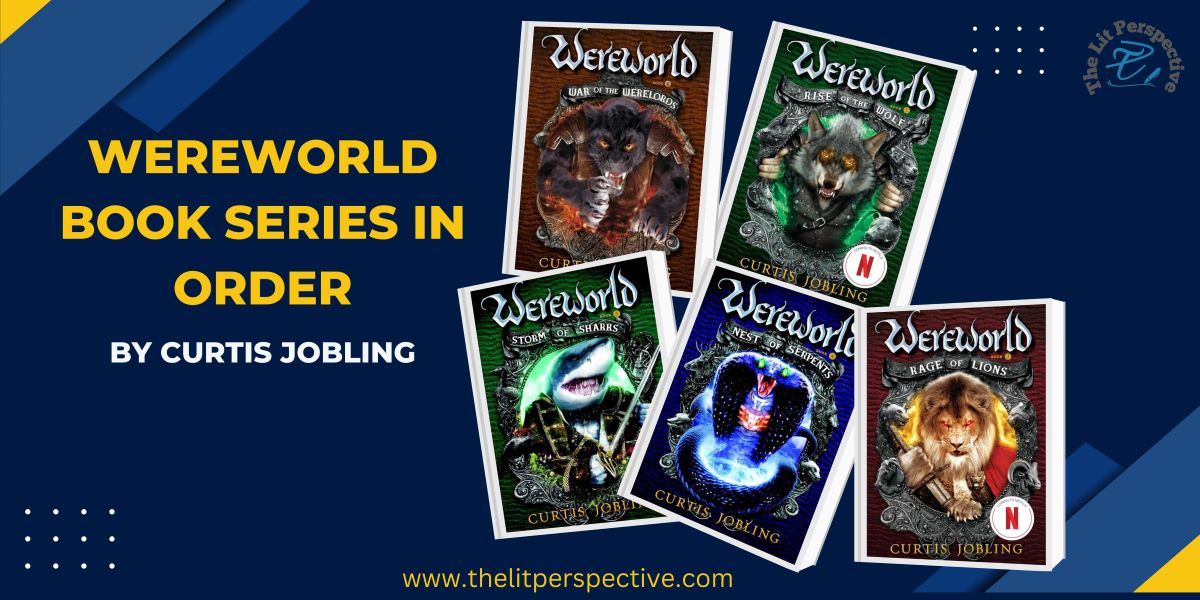TheLitPerspective is your one-stop shop for everything that ignites the spark of curiosity within you.
Pillars of the Earth Book Series: Everything You Need to Know
Ken Follett’s Pillars of the Earth book series has captivated readers with its vivid portrayal of medieval England, blending historical authenticity with compelling storytelling.
Set against the backdrop of religious turmoil, ambitious architecture, and complex human relationships, the series traces generations of families whose lives are interwoven through ambition, survival, and the unyielding desire for progress.
With monumental cathedrals as its core metaphor, the series explores the endurance of human spirit amidst adversity. Through its unique fusion of fact and fiction, Pillars of the Earth has become a landmark in historical fiction, resonating with readers around the globe.
Pillars of the Earth Book Series By Chronological Order
- The Pillars of the Earth (1989)
- World Without End (2007)
- A Column of Fire (2017)
- The Evening and the Morning (2020)
- The Armor of Light (2023)
Pillars of the Earth Book Series by Reading Order
While each book can be read as a standalone due to their distinct timelines, reading them in publication order is recommended to fully appreciate character developments and overarching themes:
- The Pillars of the Earth
- World Without End
- A Column of Fire
- The Evening and the Morning
- The Armor of Light
Ken Follett: The Mastermind Behind the Series
Ken Follett, a Welsh-born novelist, initially gained fame with thrillers before shifting gears with Pillars of the Earth. Known for his meticulous research and storytelling prowess, Follett’s deep interest in history laid the groundwork for this celebrated series.
He found inspiration in the medieval period’s grand architectural ambitions, particularly the cathedrals, which symbolized humanity’s pursuit of greatness amidst religious and political strife.
Follett’s dedication to creating historically rich and narratively complex worlds has made him one of the most respected figures in contemporary historical fiction.
Setting and Time Period of the Series
The series transports readers to 12th-century England, a time of feudalism, church influence, and social stratification. Follett’s decision to place the story in medieval England allows him to explore themes relevant to both the era and today, such as ambition, faith, and survival.
From the small towns and vast English countryside to the grandeur of looming cathedrals, the setting is integral to understanding the characters’ motivations and struggles. The vivid medieval landscapes bring readers closer to the everyday life and ambitions of the time, offering a portal into a world where survival and progress were hard-won.
Overview of Each Book in the Series
The Pillars of the Earth series spans four major books: The Pillars of the Earth, World Without End, A Column of Fire, and The Evening and the Morning. Each installment captures a different historical period while introducing new characters and deepening family sagas.
Follett meticulously ties each book together, creating a multi-generational tapestry where familial legacies and societal conflicts intertwine. The books can be read as standalone novels, yet each contributes to the overarching themes and narratives that define the series.
Book One: The Pillars of the Earth
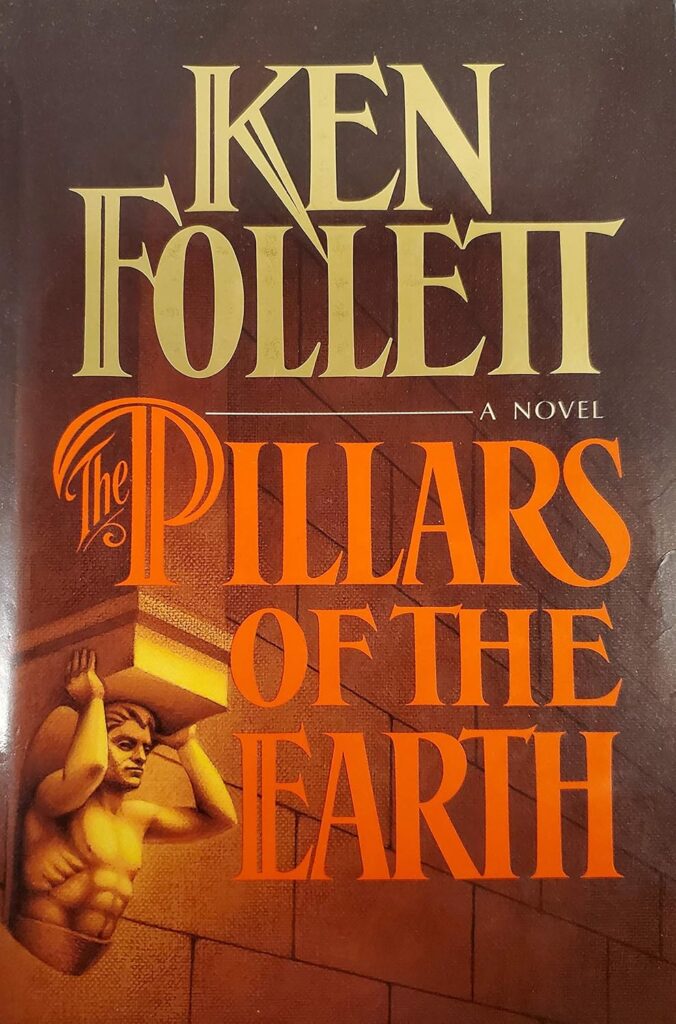
In The Pillars of the Earth, readers are introduced to the town of Kingsbridge and the powerful ambition of Tom Builder, who dreams of constructing a cathedral that would symbolize faith and grandeur. Alongside Tom, characters like Aliena, Philip, and Jack take on pivotal roles in this story of love, betrayal, and religious conflict.
The cathedral itself becomes a character, symbolizing the aspirations of the town’s inhabitants and their desire to leave a lasting legacy. Themes of resilience, ambition, and the complexity of human desires are prevalent throughout the book, making it a timeless exploration of the human spirit.
Book Two: World Without End
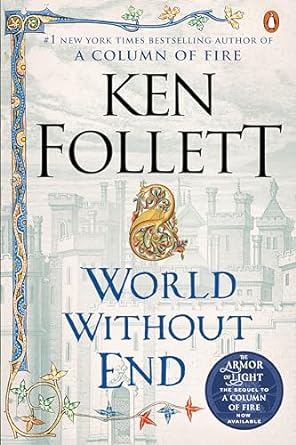
Set two centuries after the first book, World Without End delves into the descendants of the original characters and the impact of their actions. The town of Kingsbridge faces new challenges, such as the Black Death, political unrest, and evolving social structures.
Characters like Caris and Merthin navigate this changing landscape, where traditional values clash with emerging ideas. Through their stories, Follett examines the enduring themes of human survival, societal growth, and the relentless pursuit of knowledge and progress. The book reflects the continuity of human aspirations, even as the world around them shifts.
Book Three: A Column of Fire
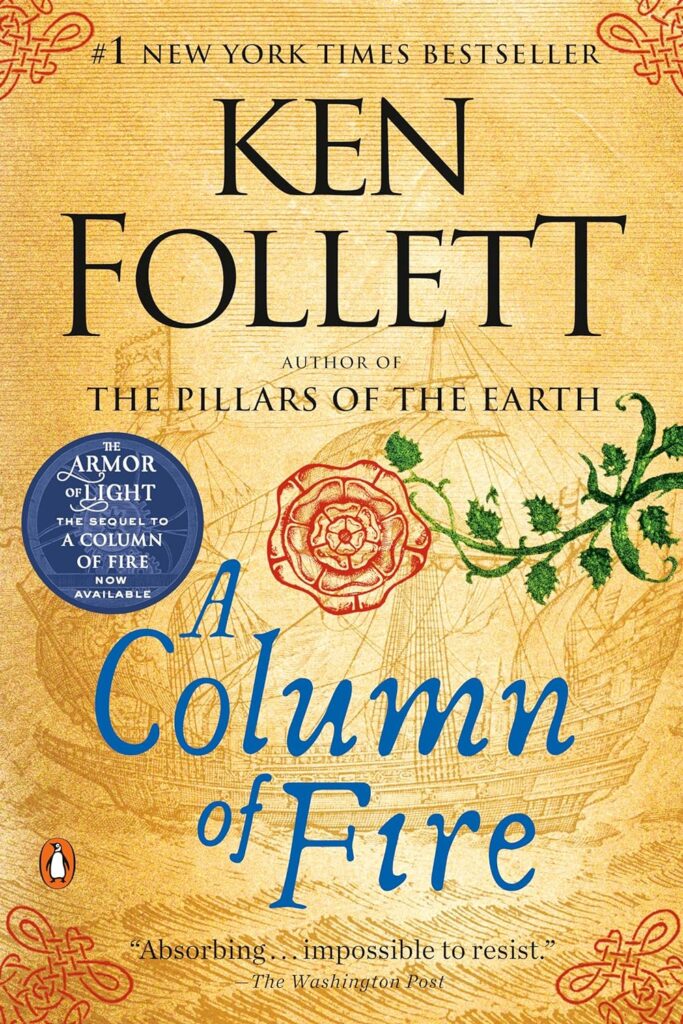
A Column of Fire shifts to the Elizabethan era, introducing religious and political tensions that defined England at the time. The story explores the lives of Ned Willard and Margery Fitzgerald as they navigate a world marked by Protestant-Catholic conflicts and the threat of foreign powers.
The novel reflects on the impact of faith and politics on personal lives, with Follett using historical figures like Queen Elizabeth and Mary, Queen of Scots, to add depth to the narrative. This installment broadens the series’ scope, reflecting how religious strife and political ambition shaped England’s future.
Book Four: The Evening and the Morning
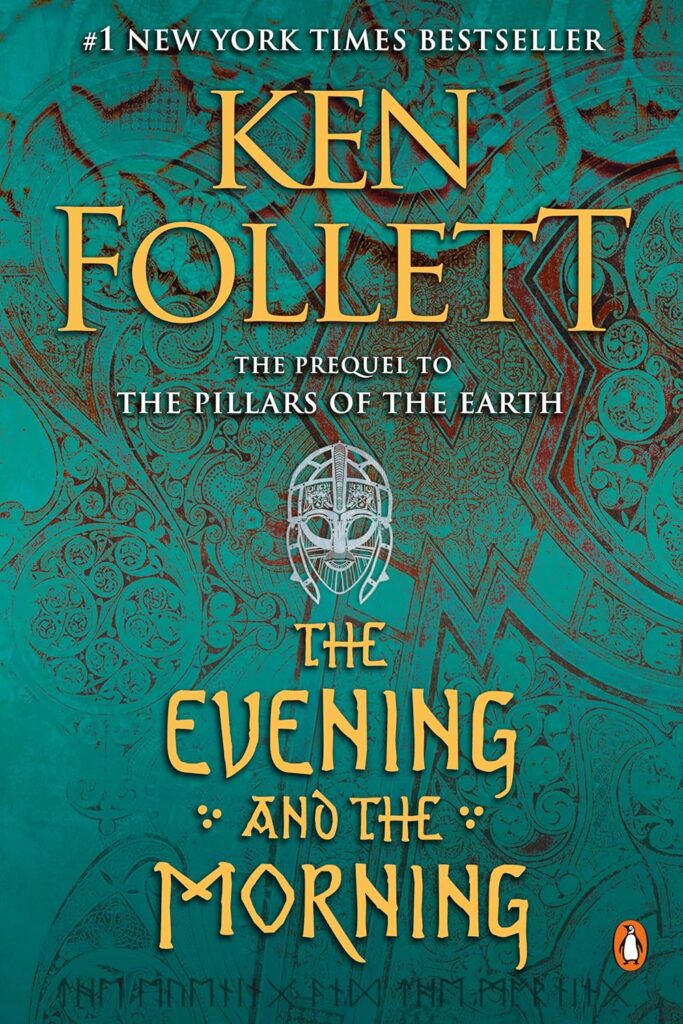
Set during the Dark Ages, The Evening and the Morning is a prequel that explores the foundations of Kingsbridge itself. Here, Follett introduces new characters like Edgar, a boatbuilder, and Ragna, a noblewoman who battles the constraints of her time.
This installment unveils the struggles and resilience required to build a society from the ground up. By portraying the early challenges of Kingsbridge, Follett emphasizes the themes of human perseverance and ambition, which become cornerstones of the series. The book serves as a foundation, illustrating how the seeds of progress were sown amidst hardship.
Book Five: The Armor of Light
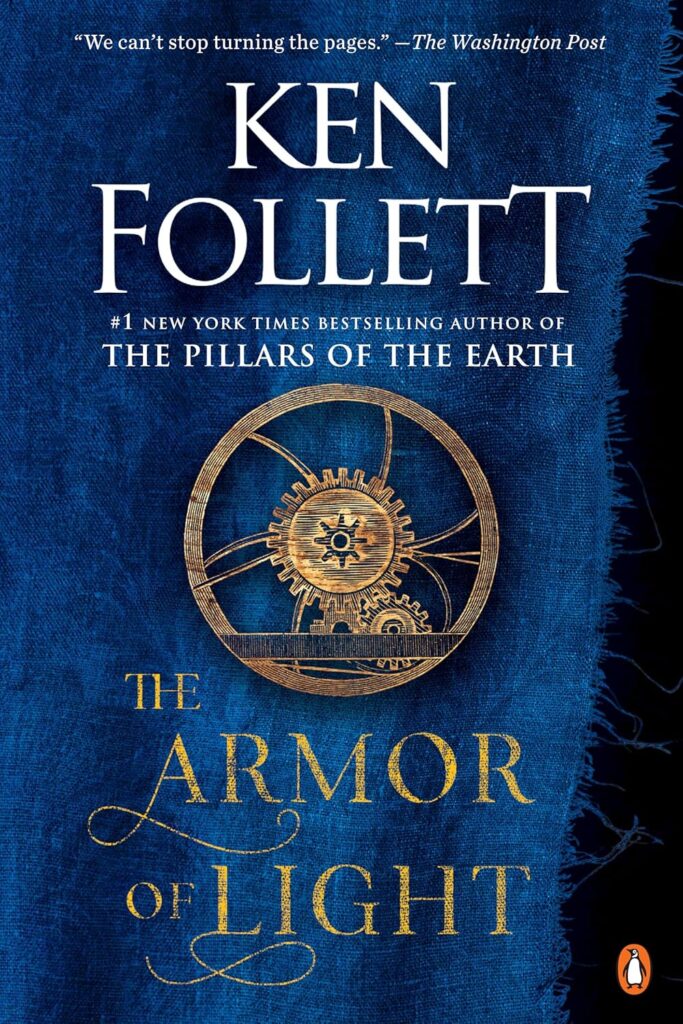
In “The Armor of Light” (2023), readers are drawn into a compelling narrative that intricately weaves themes of ambition, faith, and human complexity. The story follows a determined protagonist and a diverse cast of characters as they navigate the challenges of power and personal desire in a vividly depicted world.
Significant structures within the narrative serve as powerful symbols, reflecting the characters’ aspirations and struggles, much like the cathedrals in “The Pillars of the Earth.” Through their journeys, the novel explores the resilience of the human spirit, illustrating how love can inspire greatness while also leading to betrayal.
Ultimately, “The Armor of Light” offers a timeless reflection on the pursuit of dreams amidst adversity, resonating deeply with readers through its rich character development and thematic depth.
Recurring Themes in the Series
The series is marked by timeless themes that resonate across generations. Ambition, resilience, and faith are central to the narrative, with characters who continually push the boundaries of what is possible within their societal constraints.
Follett’s focus on these universal themes allows readers to connect deeply with the characters, regardless of historical context. The ongoing clash between tradition and progress, authority and rebellion, personal belief and societal expectations, adds layers of complexity to the narrative.
Character Development Across Generations
One of the series’ most compelling aspects is the evolution of its characters across generations. Family dynamics, personal ambitions, and societal changes affect each character uniquely.
Through the families of Kingsbridge, Follett captures the nuances of human relationships and the influence of ancestry on individual identities. Each generation faces unique challenges, yet the core struggles for love, power, and survival remain the same, offering readers a nuanced look at human resilience across time.
Architecture as a Central Theme
The construction of grand cathedrals serves as a potent symbol throughout the series. These structures represent more than religious devotion; they embody the aspirations and vision of an era.
Follett’s descriptions bring these architectural feats to life, highlighting the intense labor, innovation, and passion that went into their creation. By focusing on architecture, Follett underscores the drive for immortality in a world where life was fleeting, showcasing the power of human ingenuity and ambitions.
Historical Accuracy and Creative License
One of the hallmarks of the Pillars of the Earth series is Follett’s balance between historical accuracy and creative storytelling. Follett grounds his novels in historical events, figures, and practices that reflect the realities of medieval and early modern England, from the influence of the Catholic Church to the political conflicts of Elizabethan England.
While many events and locations are accurate, Follett uses creative license to weave fictional characters into real historical contexts, blending fact with fiction to create a more engaging narrative. This careful balance adds depth to the series without sacrificing historical believability, allowing readers to enjoy a historically immersive experience.
Cultural and Political Themes in the Series
Follett’s series also offers a critique of medieval and early modern societal structures, delving into the interplay of class, gender, and authority. Through the town of Kingsbridge, the novels explore how these themes impact individual lives and societal progress.
The hierarchy of power and the feudal system are depicted in rich detail, showing how they influence characters’ fates and ambitions. Gender roles, in particular, are examined as female characters like Aliena, Caris, and Ragna strive to assert themselves within a male-dominated society.
Follett’s portrayal of these struggles provides an insightful commentary on the limitations of medieval society while drawing subtle parallels to contemporary issues.
The Role of Religion and the Church
Religion is a dominant force in the Pillars of the Earth series, shaping the lives of the characters and dictating the trajectory of Kingsbridge’s development. The influence of the Church is most visible in the first two novels, where religious leaders wield considerable power and influence over the people.
The series critiques the Catholic Church’s role in suppressing innovation and promoting superstition, as well as the corruption that sometimes plagued religious institutions. At the same time, Follett presents characters whose faith is sincere and transformative, balancing criticism with depictions of true devotion. This nuanced approach to religion allows readers to see both its potential for both oppression and spiritual inspiration.
Why the Series Resonates with Modern Readers
Despite its historical setting, Pillars of the Earth resonates with contemporary audiences due to its timeless themes and relatable struggles. Readers are drawn to the universal challenges faced by the characters—ambition, love, loss, and the search for meaning—making the series relevant even today.
Follett’s exploration of societal limitations and individual resilience echoes modern-day struggles for equality, progress, and justice. This relatability, combined with Follett’s intricate storytelling, keeps readers invested in the characters’ journeys, allowing the series to bridge the gap between past and present.
Critical Reception and Awards
The Pillars of the Earth series has received widespread acclaim for its storytelling, historical depth, and complex character development. Over the years, Follett’s work has garnered numerous awards and recognitions, cementing the series as a modern classic in historical fiction.
The series has an approval rating of 77% on Rotten Tomatoes, based on 30 reviews, with an average rating of 5.92/10.
Source: Rotten Tomatoes
Awards and Nominations
The Pillars of the Earth received significant recognition at various award ceremonies:
- Primetime Emmy Awards (2011):
- Winner: Outstanding Sound Editing for a Miniseries, Movie, or Special
- Nominations: Outstanding Special Visual Effects, Outstanding Music Composition, Outstanding Makeup, Outstanding Hairstyling, Outstanding Cinematography.
- Golden Globe Awards (2011):
- Nominations: Best Miniseries or Motion Picture Made for Television, Best Performance by an Actor (Ian McShane), Best Performance by an Actress (Hayley Atwell).
- Gemini Awards (2011):
- Winner: Best Sound in a Dramatic Program
- Nominations included Best Dramatic Mini-Series and acting categories for both lead and supporting roles.
- Bambi Awards (2011): Nominated for Favorite TV Mini-Series.
- Satellite Awards (2010): Nominations for Best Miniseries and Best Actor in a Miniseries or Motion Picture Made for Television.
- Other notable nominations included the Academy of Science Fiction, Fantasy & Horror Films, the Banff Rockie Award, and the Monte-Carlo TV Festival.
Adaptations and Cultural Impact
The popularity of Pillars of the Earth has led to various adaptations, including television miniseries, graphic novels, and audiobooks, each bringing Follett’s world to new audiences. The television adaptation, produced in 2010, introduced Kingsbridge’s story to a broader audience and was well-received, further establishing the series as a cultural phenomenon.
Adaptations
- Miniseries (2010):
- The eight-part miniseries premiered in July 2010 on Starz in the U.S. and Channel 4 in the UK, featuring a star-studded cast including Ian McShane, Hayley Atwell, and Matthew Macfadyen.
- While it closely follows the novel’s storyline, significant changes were made to character ages and plot points, leading to some criticism regarding its fidelity to the source material. Ken Follett himself made a cameo appearance, indicating his support for the adaptation.
- Sequel Miniseries (2012):
- Following the success of The Pillars of the Earth, a sequel titled World Without End was released in 2012, continuing the narrative in Kingsbridge but set two centuries later. This adaptation also received mixed reviews but maintained interest in Follett’s work.
- Video Game (2017):
- A video game adaptation was released in 2017, further expanding the story’s reach into interactive media. This game allowed players to experience the narrative through gameplay mechanics tied to the book’s themes.
Additionally, the novels have inspired a range of media, from video games to historical tours, highlighting the series’ influence on popular culture. These adaptations have expanded the series’ reach, allowing readers and viewers to engage with Kingsbridge’s story in new and creative ways.
Conclusion: The Enduring Legacy of the Pillars of the Earth
The Pillars of the Earth series stands as a monumental achievement in historical fiction, offering readers a richly textured portrayal of human resilience, ambition, and ingenuity.
Through the town of Kingsbridge and its generations of inhabitants, Ken Follett has crafted a timeless story that continues to resonate with readers of all ages. The series’ exploration of universal themes like love, power, and the pursuit of greatness ensures its place as a classic.
Follett’s masterful storytelling and meticulous historical research have left an indelible mark on the genre, inspiring both readers and writers. As a testament to the human spirit, the Pillars of the Earth series will undoubtedly endure, captivating audiences for generations to come.
FAQs
1. Is Pillars of the Earth based on true events?
While the Pillars of the Earth series incorporates real historical events and figures, the main plot and characters are fictional. Ken Follett has meticulously researched the time periods in which each book is set, ensuring historical accuracy while weaving his own creative narrative.
2. In what order should I read the Pillars of the Earth series?
The recommended reading order for the series is by publication date: The Pillars of the Earth, World Without End, A Column of Fire, and finally, The Evening and the Morning, which is a prequel. This order allows readers to follow the chronological progression of the story.
3. What makes Pillars of the Earth unique in the historical fiction genre?
The series stands out due to its focus on cathedral-building, which serves as a metaphor for human ambition and resilience. Follett’s dedication to historical detail, combined with complex characters and timeless themes, makes the series a captivating read.
4. Are the Pillars of the Earth books suitable for young readers?
Due to mature themes, including violence and complex political and social issues, the series is more suitable for adult readers. However, mature teenagers interested in history may also appreciate the series.
5. Has Ken Follett written other historical fiction outside of Pillars of the Earth?
Yes, Ken Follett has written several other historical novels, including the Century Trilogy, which explores key events of the 20th century. His work spans various historical periods, showcasing his versatility and dedication to the genre.
Book Series to Read on
TheLitPerspective is your one-stop shop for everything that ignites the spark of curiosity within you.
